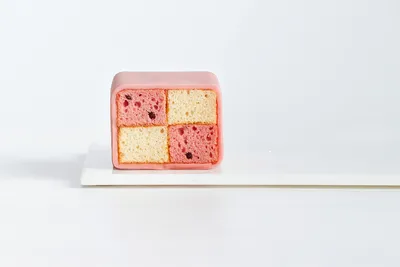Battenburg
The Battenburg, a distinctive British checkboard cake stuck together with thin layers of apricot jam, wrapped in marzipan, has a rich history.
It is a staple of British tea culture, with the familiar design and flavours remaining a firm favourite to this day. At Puratos, we believe that there is space for both tradition and innovation. Whether you’re looking to create a classic Battenburg, or a creative showstopping version, our solutions provide you with the high-quality ingredients to meet your needs.
Satin complete cake mix is perfect for creating consistent cakes every time, while saving you time in the baking process. Combined with our fruit fillings, the flavour possibilities are endless.

Join us as we explore the origin story of the Battenburg – from the 9 square checkboard to the 4 squares. Take inspiration from the different versions to meet the latest consumer trends.




